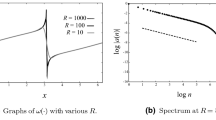Abstract:
This paper gives theoretical results on spinodal decomposition for the stochastic Cahn–Hilliard–Cook equation, which is a Cahn–Hilliard equation perturbed by additive stochastic noise. We prove that most realizations of the solution which start at a homogeneous state in the spinodal interval exhibit phase separation, leading to the formation of complex patterns of a characteristic size.
In more detail, our results can be summarized as follows. The Cahn–Hilliard–Cook equation depends on a small positive parameter ε which models atomic scale interaction length. We quantify the behavior of solutions as ε→ 0. Specifically, we show that for the solution starting at a homogeneous state the probability of staying near a finite-dimensional subspace ?ε is high as long as the solution stays within distance r ε=O(εR) of the homogeneous state. The subspace ?ε is an affine space corresponding to the highly unstable directions for the linearized deterministic equation. The exponent R depends on both the strength and the regularity of the noise.
Similar content being viewed by others
Author information
Authors and Affiliations
Additional information
Received: 2 May 2000 / Accepted: 8 July 2001
Rights and permissions
About this article
Cite this article
Blömker, D., Maier-Paape, S. & Wanner, T. Spinodal Decomposition¶for the Cahn–Hilliard–Cook Equation. Commun. Math. Phys. 223, 553–582 (2001). https://doi.org/10.1007/PL00005585
Issue Date:
DOI: https://doi.org/10.1007/PL00005585




